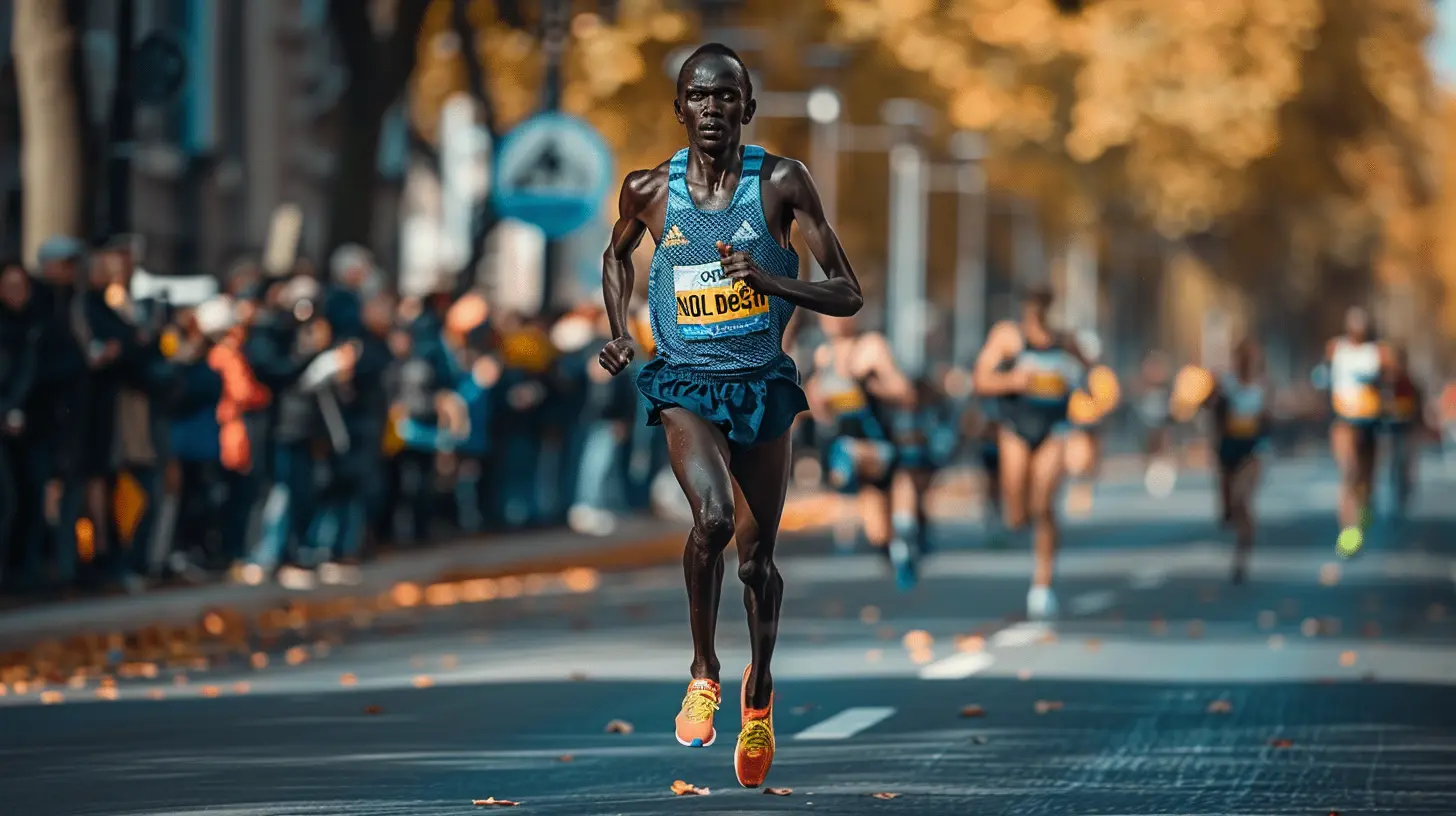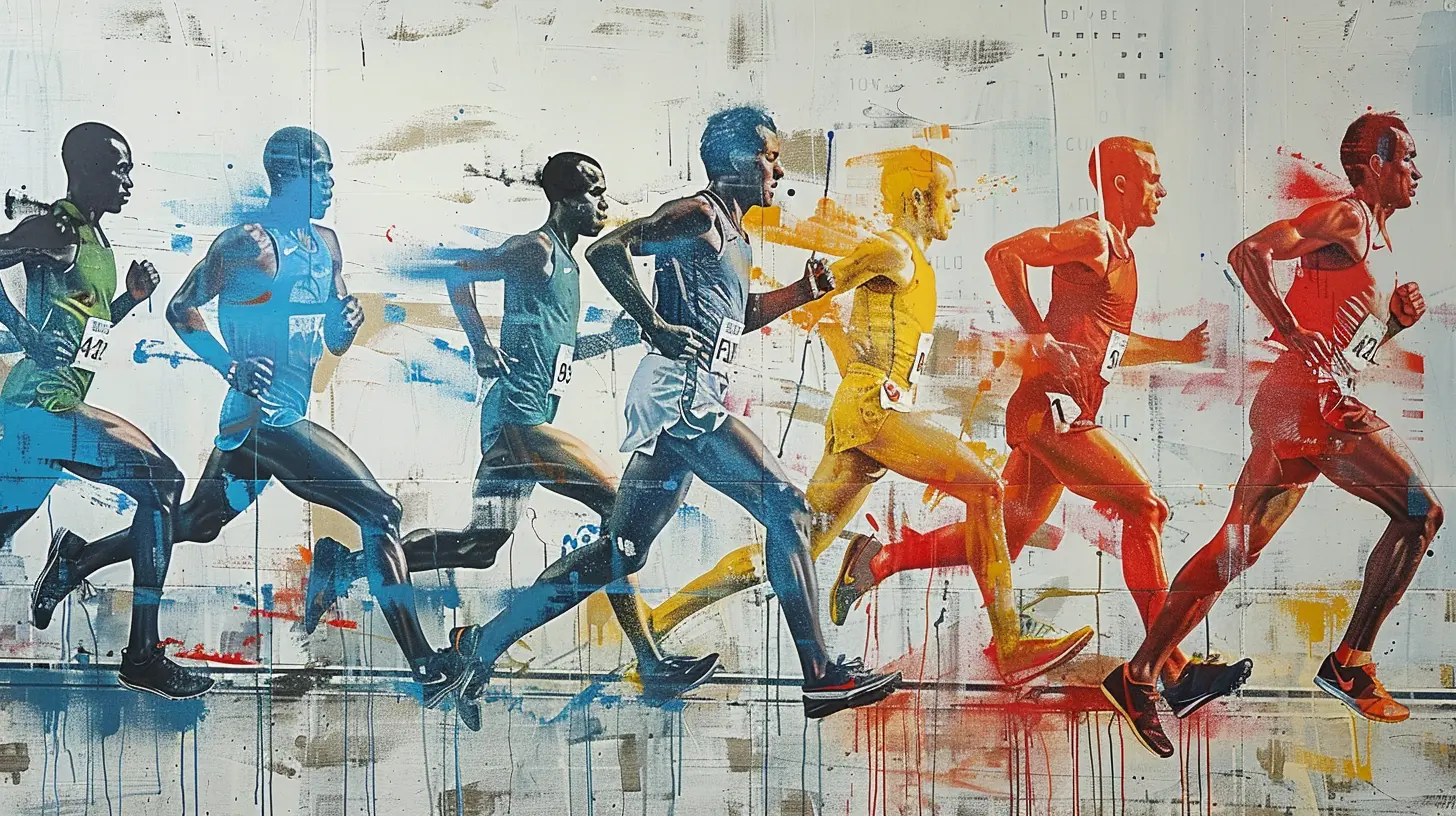Breaking Down the Components of a Record-Breaking Marathon
31 August 2025
Ever wondered what sets record-breaking marathoners apart from the rest of the pack? Sure, they're fast—blisteringly fast—but there's a lot more brewing beneath the surface than just speed. Whether you're a weekend warrior, an aspiring elite runner, or just someone amazed at how humans can run 26.2 miles at a pace that seems superhuman, this breakdown is for you.
Let’s lace up and hit the road. We’re about to dissect every little ingredient that goes into cooking up a marathon performance worthy of the record books.
The Perfect Storm: What Makes a Marathon Record Possible?
Before we dive into mile splits and blood lactate levels, let’s start with the big picture. A record-breaking marathon doesn’t just rely on one factor. It’s a harmony of multiple elements—training, technology, strategy, and even the weather. Think of it as a perfectly mixed cocktail; mess up one ingredient and the whole thing falls apart.The Holy Trinity: Athlete, Course, and Conditions
It’s not just the runner that makes the record—it’s the entire ecosystem.- The Athlete: Months (or years) of high-volume, high-intensity training, strict discipline, and mental toughness.
- The Course: Fast, flat, minimal turns, low elevation—think Berlin or Valencia, not Boston or New York.
- The Conditions: Cool temps (around 45–55°F), no wind, dry roads, low humidity. Basically, runner’s paradise.
When all three align? That’s when history is made.
Training: The Engine Behind the Speed
Let’s not kid ourselves—no one wakes up and casually runs a 2:01 marathon. The training is borderline obsessive.Volume and Intensity: The Balancing Act
Record chasers log over 100 miles a week, sometimes pushing 140+. It’s not just about piling on mileage, though. Intensity matters.- Long Runs — 20+ miles at a controlled pace to build endurance.
- Tempo Runs — Sustained efforts just below race pace to raise lactate threshold.
- Intervals — Short, hard efforts at or above VO₂ Max.
All this adds up to a body that's a finely tuned machine.
Recovery is King
Here’s the kicker: you don’t get stronger while training. You get stronger while recovering. Elite runners sleep like it’s a part-time job (hello, 9 hours at night + naps!) and obsess over hydration, massage, stretching, and yes—even ice baths.
Mental Toughness: Winning the Mind Game
You know that voice in your head that says “I can’t”? Elite athletes have learned to mute it.The Pain Cave
Every runner visits the pain cave—where everything hurts and quitting seems reasonable. The difference with world-class marathoners? They move in and redecorate.They’ve trained their brain to embrace discomfort. Visualizations, mantras, even self-talk rituals—all these little hacks help them keep going when it feels impossible.
Focus and Strategy
When it comes to pacing, successful runners stick to the plan. No surging with the pack early on. No panicking if someone makes a break. It's all about conserving energy and executing the race exactly how it was rehearsed in training.
The Science of Nutrition and Hydration
What fuels a 2-hour marathon? Spoiler: It’s way more than just carbs the night before.Carb Loading: The Myth and the Method
It’s not just about eating a mountain of pasta. Elite athletes follow a systematic carb-loading protocol to maximize glycogen stores—your body's fuel for the race.Think complex carbs, low fiber, and increased water retention to store glycogen effectively.
Race-Day Fueling: Every Second Counts
Gels, sports drinks, and, more recently, personalized nutrition plans have changed the game. Most elites consume 60–90 grams of carbs per hour.And here’s the kicker: they practice their fueling strategy weeks or months in advance. No one wants surprise stomach issues at mile 18.
Cutting-Edge Gear: The Tech Behind the Triumph
If you think marathon gear is just a pair of shoes and a singlet, think again. We’re living in the era of performance-enhancing footwear.Super Shoes
You’ve heard about them—those flashy, carbon-plated beasts strapped to runners' feet. Brands like Nike (with their Vaporfly and Alphafly series) led the charge, but now almost every major label is in the game.These shoes:
- Have a carbon-fiber plate to propel forward motion
- Use ultra-light, responsive foam to reduce fatigue
- Can shave up to 4% off your time
In a race where every second counts? That’s huge.
Wearables and Metrics
From heart rate variability to stride efficiency, modern tech allows athletes and coaches to analyze every step. It's not just running anymore—it's data-driven performance optimization.Course Design: Flat, Fast, and Furious
Not all marathons are created equal. When records are on the line, flat and fast is the name of the game.The Blueprint of a Record Course
Courses like Berlin, Chicago, and Valencia are designed for speed. Why?- Minimal Elevation Gain – Hills = energy drain
- Few Turns – Every turn adds time and disrupts rhythm
- Sea-Level Altitude – More oxygen per breath
Plus, these races often have pacing teams, even rotating pacers (like in Kipchoge’s INEOS 1:59 attempt) to keep the tempo steady and fast.
Weather: Nature’s Role in the Record
Great weather won’t guarantee a record, but bad weather will definitely ruin one.Ideal Race Conditions
The sweet spot? Around 50°F (10°C), dry, with a slight tailwind. Why?- Cooler temps = better body temperature regulation
- Low humidity = more efficient sweat evaporation
- Tailwind = free speed
That’s why records often fall in early fall or spring—seasonal goldilocks zones for runners.
Pacing: The Art of Not Going Too Fast (or Too Slow)
Pacing might sound simple, but it’s arguably the most critical part of a marathon.Even Splits or Negative Splits?
Even splits—running each mile at the same pace—are the gold standard. But many record chasers prefer negative splits, where the second half is faster than the first.This strategy:
- Conserves energy early
- Limits fatigue in the final miles
- Creates a psychological boost when passing competitors
And when executed perfectly? It’s pure poetry in motion.
Biomechanics: Running Efficiently to Go the Distance
Ever notice how elite marathoners look almost effortless? That’s not luck—it’s biomechanics.Form Matters
Efficiency is everything over 26.2 miles.Key traits of marathon-efficient form:
- Midfoot strike
- High cadence (steps per minute)
- Minimal vertical oscillation (bouncing)
- Slight forward lean
Less wasted energy = faster miles.
Advanced runners even undergo gait analysis to tweak their form, conserve energy, and stay injury-free.
The Role of Support Teams
Behind every fast runner is a small army of unsung heroes.Coaches, Nutritionists, and Therapists—Oh My!
From designing personalized training blocks to dialed-in meal plans and treatment sessions, the support team ensures the athlete’s engine runs smoothly.Even sports psychologists are in the mix, helping with pre-race nerves, race strategy, and building mental resilience.
Notable Record-Breaking Marathons
Let’s look at a few that changed the game:Eliud Kipchoge – 2:01:09 (Berlin 2022)
Executed to perfection. Even splits, perfect conditions, legendary status confirmed.Brigid Kosgei – 2:14:04 (Chicago 2019)
Smashed Paula Radcliffe’s long-standing record in cool Chicago weather, with consistent pacing from start to finish.INEOS 1:59 Challenge – Kipchoge’s Sub-2 Hour (Unofficial)
Though not an official world record (due to controlled conditions), Kipchoge’s 1:59:40 in Vienna deserves mention. It showed what’s humanly possible… even if it was a bit of a sci-fi experiment.Could You Be Next?
Look, not everyone is going to run a 2:02, but we can all aim to run our personal best. And by understanding what makes a record-breaking marathon tick, you can apply bits and pieces to your own training.- Nail your pacing.
- Dial in your nutrition.
- Train smart and recover smarter.
- Understand your gear.
- Build mental toughness.
If you're out there chasing a PR, you're running your own kind of record-breaking race. So don't just chase time—chase excellence.
Final Thoughts
A record-breaking marathon isn’t just about someone hitting stop on their watch under 2:03. It’s about the culmination of science, grit, planning, and even a bit of magic. It’s the Olympics of endurance. It’s human potential on full blast. And now that you know what goes into it, maybe that next long run of yours won't seem so...well...long.So, what's your next finish line?
all images in this post were generated using AI tools
Category:
AthleticsAuthor:

Uziel Franco
Discussion
rate this article
1 comments
Lyra McIntosh
Impressive strategy and training!
September 18, 2025 at 2:37 AM

Uziel Franco
Thank you! I'm glad you found it insightful!


